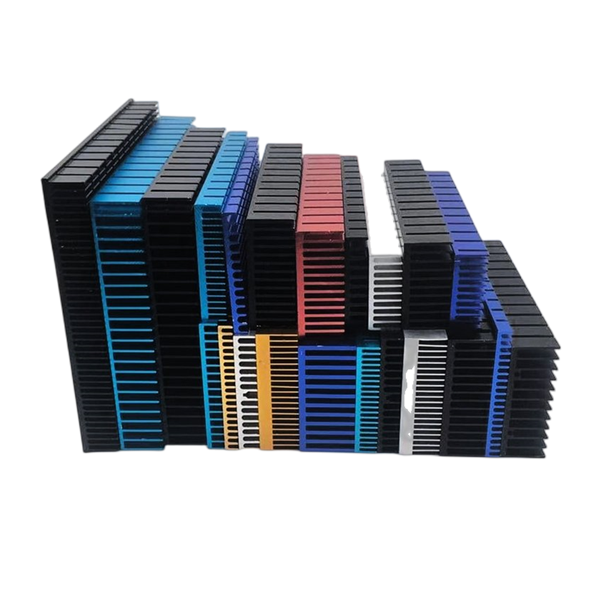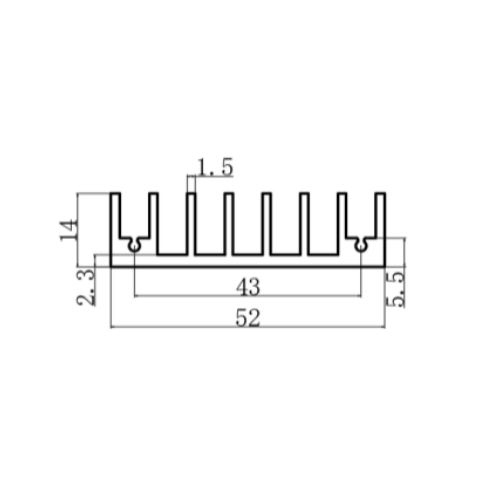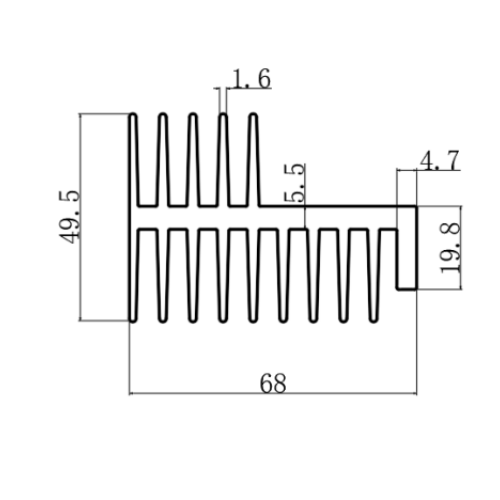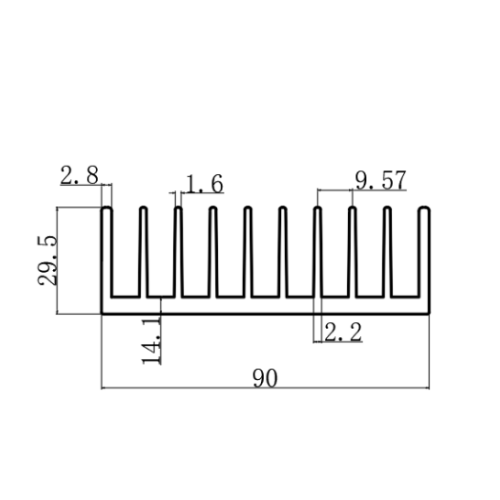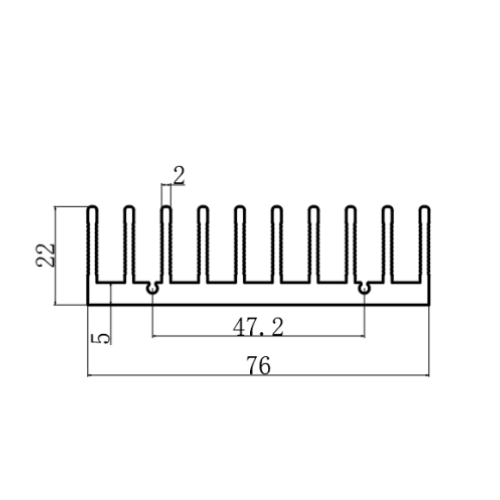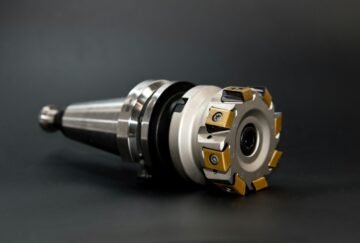Description
Introduction to the 400x50mm Aluminum Heatsink
When it comes to thermal management, the 400x50mm aluminum heatsink stands out as a game-changer for high-power industrial applications. Engineered to maximize surface area and heat dissipation efficiency, this heatsink combines lightweight aluminum alloy with a precision-machined design to tackle overheating in demanding environments.
Aluminum’s superior thermal conductivity (205 W/m·K) ensures rapid heat transfer, while the 400mm x 50mm dimensions provide ample space for mounting on CPUs, power converters, LED arrays, and more. Whether you’re upgrading machinery or designing a new system, this heatsink delivers unmatched reliability.
Key Features and Specifications
The 400x50mm aluminum heatsink is built to meet rigorous industrial standards. Its design prioritizes both functionality and durability:
- Dimensions: 400mm (length) x 50mm (width) – optimized for large-scale equipment.
- Material: 6063-T5 aluminum alloy, known for its balance of strength and thermal efficiency.
- Thermal Conductivity: 205 W/m·K, ensuring rapid heat dispersion even under heavy loads.
- Weight: 19.835 kg/m.
- Surface Finish: Anodized black coating for corrosion resistance and improved aesthetics.(Default no surface treatment)

Alt text: “400x50mm aluminum heatsink installed on industrial equipment for optimal cooling”
Applications Across Industries
This 400x50mm aluminum heatsink is ideal for diverse applications, including:
- Industrial Automation:
- Cooling variable frequency drives (VFDs) and servo controllers.
- Preventing overheating in PLCs and robotic control systems.
- LED Lighting:
- Extending the lifespan of high-power LED arrays in stadiums or streetlights.
- Renewable Energy:
- Managing heat in solar inverters and battery storage systems.
- Consumer Electronics:
- Cooling gaming PCs, servers, and high-end GPUs.
Why Aluminum Outperforms Other Materials
Aluminum heatsinks dominate the thermal management industry due to their unbeatable blend of affordability, durability, and performance. Unlike copper, aluminum offers a 30% lighter weight while retaining 60% of its thermal conductivity. The 6063-T5 alloy used here further enhances heat distribution, reducing hotspots in high-load scenarios.
For example, a study by ASM International confirms aluminum’s superiority in passive cooling systems. Researchers found that aluminum heatsinks reduced operating temperatures by 22% compared to steel alternatives in industrial motor drives.
Installation Guide: Maximizing Efficiency
Proper installation ensures peak performance. Follow these steps:
- Surface Preparation:
- Clean the mounting area with isopropyl alcohol to remove dust or grease.
- Thermal Interface Material (TIM):
- Apply a thin layer of non-conductive thermal paste (e.g., Arctic MX-4).
- Mounting Hardware:
- Secure the heatsink using spring-loaded screws or clips for even pressure distribution.
- Post-Installation Checks:
- Monitor temperatures using infrared thermography for the first 48 hours.
For visual guidance, watch our YouTube tutorial demonstrating installation on a power converter.
Industry Insights
A recent NASA study on thermal management (DoFollow link) highlights aluminum’s superiority in aerospace cooling systems, reinforcing our design philosophy.
FAQs
Q: Can this heatsink be customized for odd-shaped components?
A: Yes! We offer custom drilling, cutting, and anodizing services. Contact our team for details.
Q: Is forced cooling required for this heatsink?
A: For loads under 200W, passive cooling suffices. For higher loads, pair it with a 120mm fan (sold separately).
Q: How does humidity affect performance?
A: The anodized coating resists humidity-related corrosion, making it suitable for outdoor use.
Conclusion
The 400x50mm aluminum heatsink is a cost-effective, high-efficiency solution for engineers prioritizing reliability. With its industry-leading design and compliance with ISO 9001 standards, it’s a must-have for modern thermal systems.
Explore our industrial cooling solutions for more innovations!

